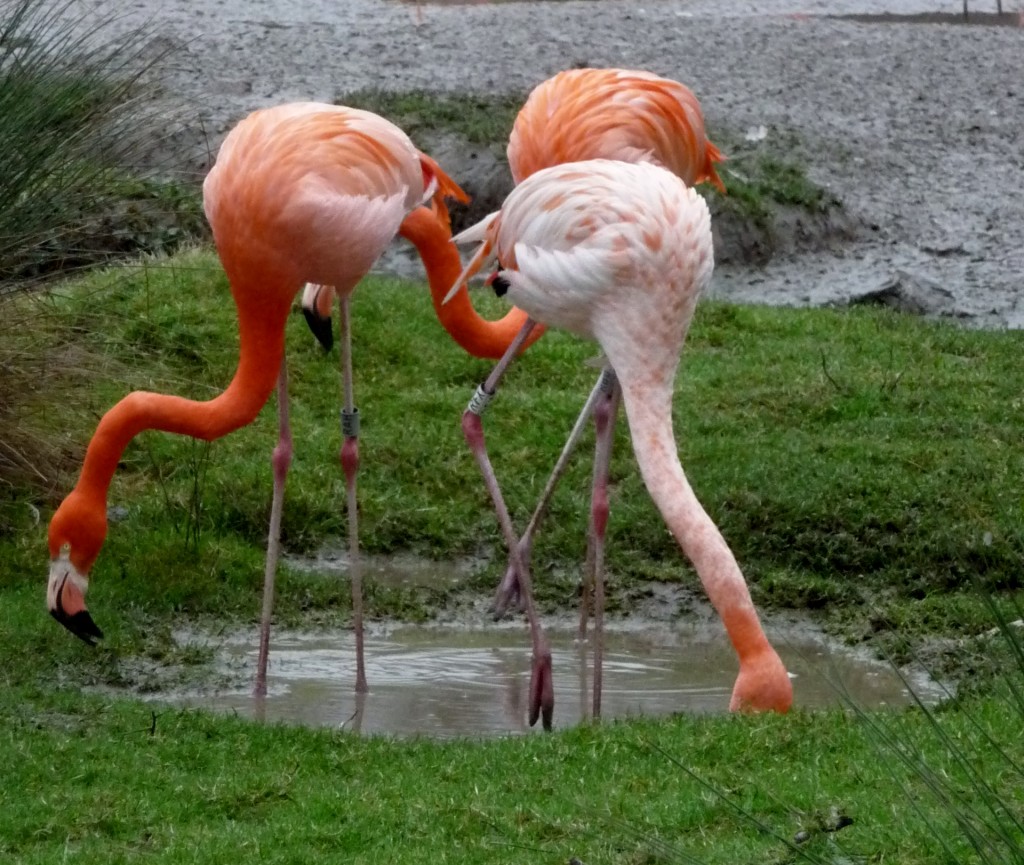Flamingos at the end of 2012
As 2013 draws ever nearer and we're into the last three days of 2012, I thought I would do a short summary of "what we've learned about flamingos" over the past 12 months, and first year of my PhD. It has been great fun spending so much time at Slimbridge and rubbing alongside of the avics, who know so much about their birds. They are an invaluable source of information for anyone attempting to research the lives of captive flamingos. As Phil so often says, you should always look at the birds and they will tell you what they need. Which rings very true when you spend so much time staring that them!

So as I am drafting my first paper from my PhD so far to submit to a scientific journal, it is quite good to reflect on what I have seen and watched and studied through the course of 2012. It is also surprising how much time has passed since March, when I started data collection; time flies when you're having fun! It's been a privilege to watch the flamingos throughout their breeding season and to see them successfully build nests, lay eggs and raise chicks. As well as follow the hard-work of Phil, Sparky and Phoebe up at the Duckery caring for the eggs in incubators before they are ready to go back underneath their pink parents when they are at the point of hatching. Slimbridge is a well-oiled machine when it comes to making baby flamingos!
I can distinguish the calls of the different species without seeing what type of flamingo is making a noise- indeed I can spot an annoyed Andean flamingo from the other side of the grounds just by what it sounds like! Listen out for a high-pitched whistle and you'll know one is in a bad mood! I know that the James' flamingo makes a low pig-like grunting noise when it's pootling around foraging in the enclosure, and that thanks to Rebecca, fountain of flamingo knowledge in the Conservation and Research section, a baby flamingo as it hatches sounds like it is saying "Eric! Eric!"
But most of all, their behaviour becomes more and more fascinating the more that I research in to it. What started as a simple enough question (do flamingos have friends?) has now taken on so many more areas of future direction. Each of the Slimbridge flocks behaves in a different way, the birds within have their own personalities and they interact with their flock mates in the same specific way as people do around different individuals. There are bossy flamingos, and shy flamingos, quiet flamingos and loud ones, birds that take the lead and get everyone else going, and birds that are quite happy to sit back and see what happens. I have learnt that Chilean flamingos are generally regarded as being highly-strung and found of bickering, that greater flamingos are generally quite relaxed, and that you can't herd a flock of Andean flamingos if they don't want to be herded! I watched a fascinating and very human-like example of incredibly polite queuing in the Caribbean flamingo flock as birds waited their turn to go into and then out of their house. So, I guess, to sum up, whilst I might have a "year's" worth of data on flamingo friends, there is still a lot more sitting and watching to be done before I can paint a definitive picture of the social life of these weirdly wonderful pink birds. Happy New Year, folks!


